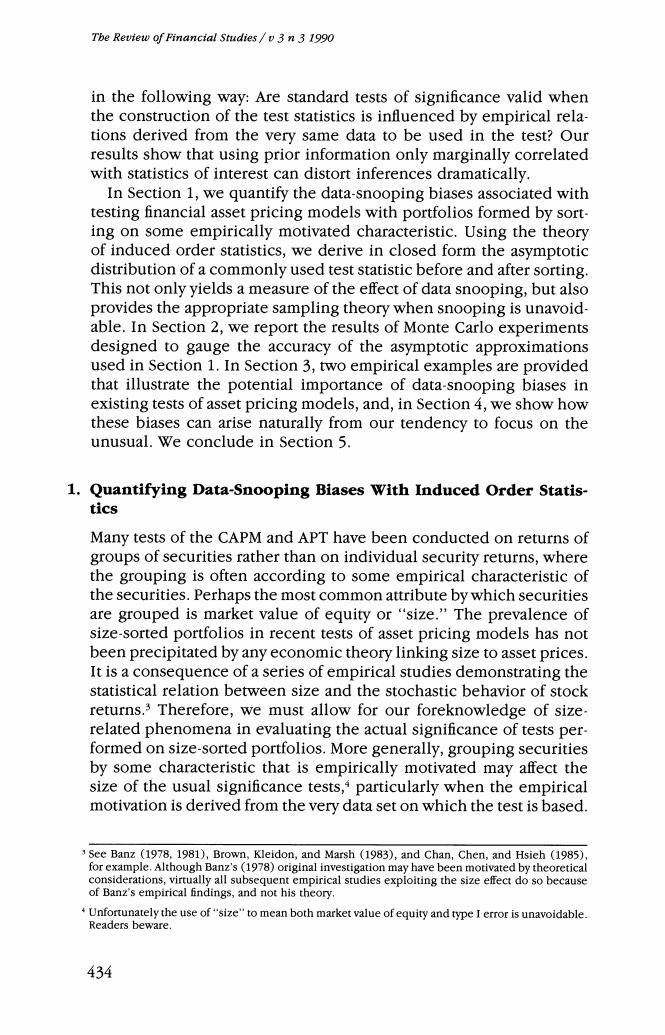正在加载图片...

Tbe Review of Financial Studies/v 3n 3 1990 in the following way:Are standard tests of significance valid when the construction of the test statistics is influenced by empirical rela- tions derived from the very same data to be used in the test?Our results show that using prior information only marginally correlated with statistics of interest can distort inferences dramatically. In Section 1,we quantify the data-snooping biases associated with testing financial asset pricing models with portfolios formed by sort- ing on some empirically motivated characteristic.Using the theory of induced order statistics,we derive in closed form the asymptotic distribution of a commonly used test statistic before and after sorting. This not only yields a measure of the effect of data snooping,but also provides the appropriate sampling theory when snooping is unavoid- able.In Section 2,we report the results of Monte Carlo experiments designed to gauge the accuracy of the asymptotic approximations used in Section 1.In Section 3,two empirical examples are provided that illustrate the potential importance of data-snooping biases in existing tests of asset pricing models,and,in Section 4,we show how these biases can arise naturally from our tendency to focus on the unusual.We conclude in Section 5. 1. Quantifying Data-Snooping Biases With Induced Order Statis- tics Many tests of the CAPM and APT have been conducted on returns of groups of securities rather than on individual security returns,where the grouping is often according to some empirical characteristic of the securities.Perhaps the most common attribute by which securities are grouped is market value of equity or"size."The prevalence of size-sorted portfolios in recent tests of asset pricing models has not been precipitated by any economic theory linking size to asset prices. It is a consequence of a series of empirical studies demonstrating the statistical relation between size and the stochastic behavior of stock returns.3 Therefore,we must allow for our foreknowledge of size. related phenomena in evaluating the actual significance of tests per- formed on size-sorted portfolios.More generally,grouping securities by some characteristic that is empirically motivated may affect the size of the usual significance tests,particularly when the empirical motivation is derived from the very data set on which the test is based. See Banz (1978,1981),Brown,Kleidon,and Marsh (1983),and Chan,Chen,and Hsieh (1985) for example.Although Banz's(1978)original investigation may have been motivated by theoretical considerations,virtually all subsequent empirical studies exploiting the size effect do so because of Banz's empirical findings,and not his theory. Unfortunately the use of"size"to mean both market value of equity and type I error is unavoidable. Readers beware. 434